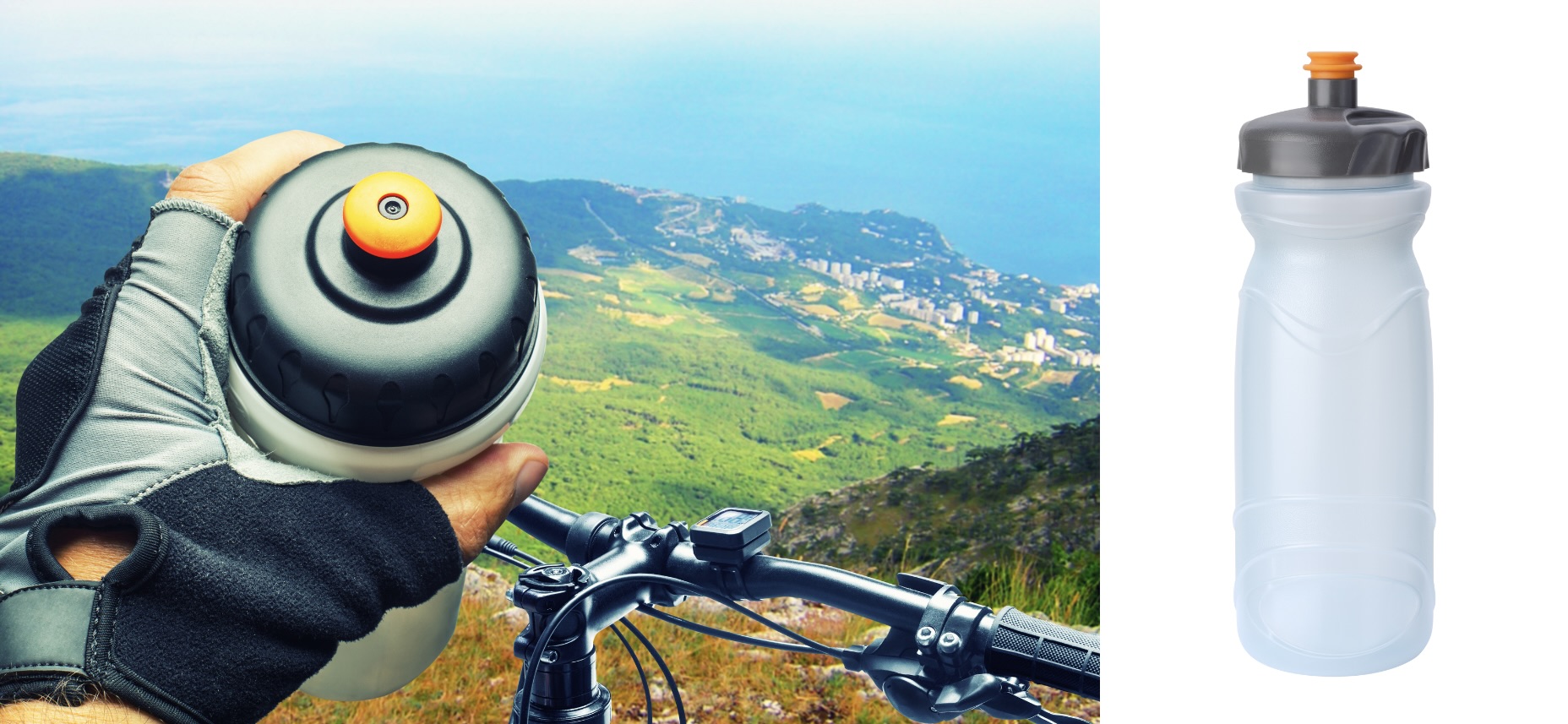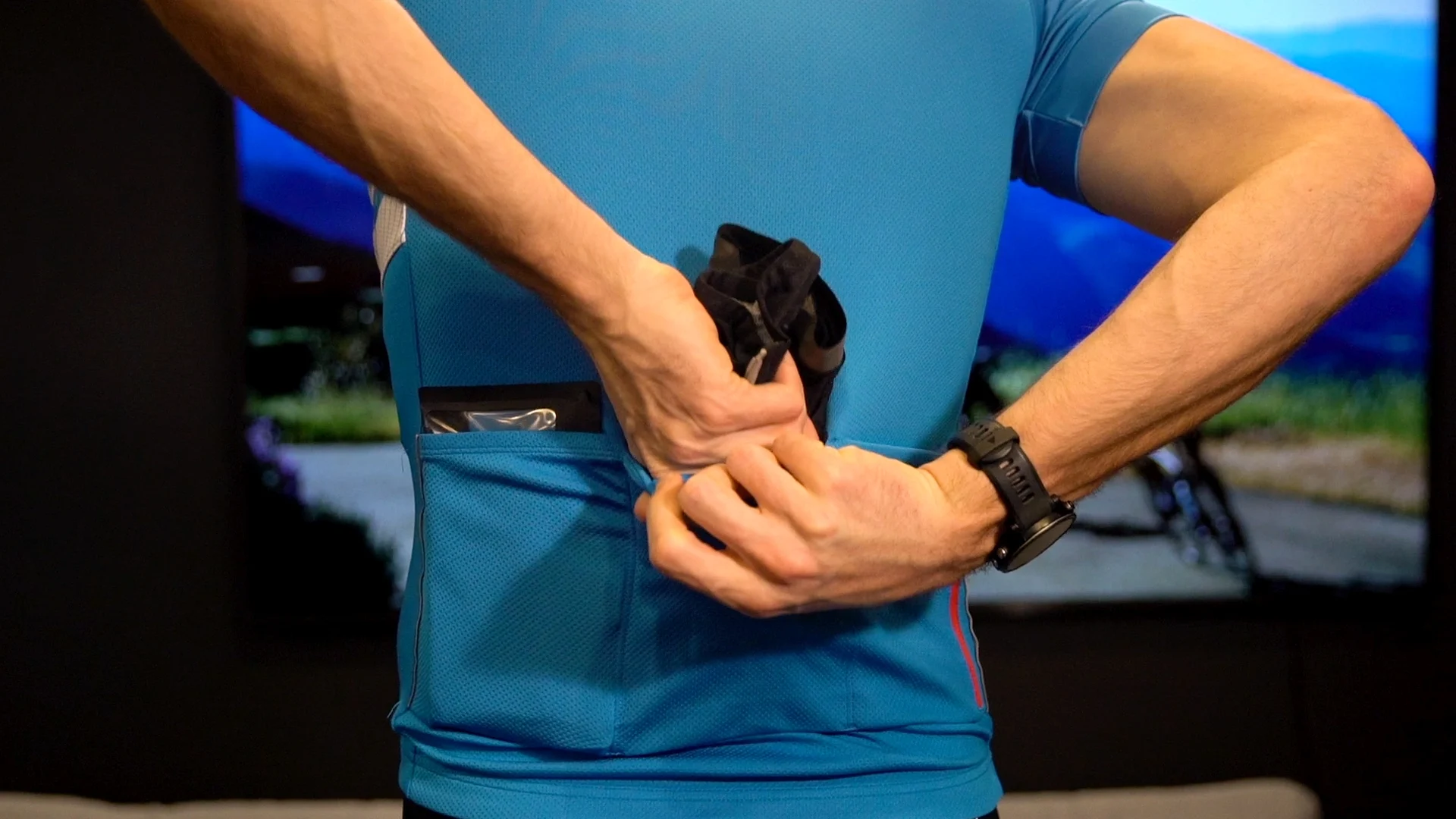It’s always important to know your packing plans before you set out on a long ride. So take a moment to read this article to excel in packing, as we will tell you every detail, from what to pack to the kinds of items you should bring.
Food and Drink
- Water: Staying hydrated should be your top priority. Pack one or two large water bottles (ideally 750 ml) to ensure you have enough to drink throughout your ride. Also, refill it whenever you have a chance.

- Food: There’s nothing worse than a sudden energy crash when your body runs low on glycogen and forces you to stop. To avoid this, it’s smart to pack snacks or a few energy bars or gels to refuel.
What to wear
1. Helmet
A helmet is non-negotiable for any ride, long or short. It’s your primary safety device, protecting your head in case of a fall. Choose a lightweight model with adequate ventilation for maximum comfort and safety.
2. Jersey
Invest in a moisture-wicking cycling jersey to stay cool and dry. And look for designs with three roomy rear pockets, ideal for keeping essentials within easy reach without leaving the saddle.

- Left Side Pocket: Use this pocket to store your number one essential items, like your phone, cash, credit card, and ID for quick access as your right hand is busy steering and maintaining balance.
- Middle Pocket: Roll up a jacket or rain jacket and tuck it into the middle pocket to extra layers as temperatures change.
- Right Side Pocket: Place snacks in the other side pocket to balance the weight across all three for comfort and convenience.
This setup keeps everything organized, balanced, and accessible, so you can stay focused on the ride.
3. Bib shorts
This is pretty self-explanatory, right? You don’t want to be distracted by an uncomfortable bottom while on your journey. So, choose bib shorts with padding for superior comfort, reducing chafing and providing support for long hours in the saddle.

4. Cycling gloves
Gloves improve grip and reduce hand fatigue, especially on longer rides. Consider some models that feature padding for extra support and comfort.

5. Sunglasses
Protect your eyes from the sun, wind, or insects with quality cycling sunglasses. Amber and rose tints with polarized lenses are recommended for every cyclist. They provide a bright field of vision, protect against glare, and help filter out reflections from bright, smooth surfaces.

6. Cycling shoes
Cycling shoes come with stiff soles for better power transfer, making pedaling more comfortable and efficient. Most of them are designed for clip-in pedals, but you can definitely ride long distances in regular trainers if that’s what you prefer!

7. Sun lotion
For all-day rides, keep your skin protected from harmful UV rays with a sweat-resistant sunscreen. Bring a small sunscreen with you to reapply and fully protect your skin.
Bike essentials
1. Lights
- Rear light: Riding with a flashing, daylight-visible rear bike light is the single most effective measure a cyclist can take to increase their likelihood of standing out to drivers.
- Headlight: For night riders, a reliable front headlight is a go-to accessory, essential for ensuring visibility and safety.
2. Bike repair kit
The unexpected can happen, so carrying a repair kit is important for making quick adjustments or repairs on the go.
3. Multi-tool
Infrequently, something on your bike will become loose and need to be adjusted, so this tool is always useful and saves you the hassle of having to carry each tool separately.
4. Spare tubes
Bringing a spare tube might seem like overkill, but when you’re in a remote area without access to a bike repair shop, you’ll be glad to have it on hand.
5. Mini pump
Flats happen. Having a portable hand pump to reinflate your tire is crucial for ensuring you can quickly get back on your ride without being stranded.
Electric devices
1. Phone
While it may seem obvious, most of us wouldn’t think of leaving without a phone—it’s essential for handling emergencies or adjusting accommodation plans if unexpected delays occur. Plus, for those with smartphones, GPS mapping and tracking apps can be incredibly useful if you’re not familiar with map reading.
2. Cycle computer
Tracking the distance you’ve traveled helps you gauge how much farther you have to go, and even a basic bike computer can provide this information.
3. Navigation aid
If you decide to leave your phone at home for a more authentic experience, consider bringing a compact map or a simple GPS device to help keep you on track.
A little note for you!
Here’s a checklist for every ride: Helmet, Water, Food, Lights, Phone, Cash, Rain jacket, Flat kit, First-aid kit.
Consider getting pack panniers: If you bring along a lot of stuff and your jersey or backpack is full, you can get a pack pannier. It’s an indispensable piece of gear for many cyclists. They provide ample storage space and easy organization. Panniers can attach to the front or rear rack, as well as the sides of a bicycle, and are typically waterproof, ensuring your belongings stay dry in various conditions.
